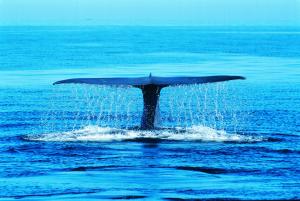- Welcome
- About Life
- National Geographic and Life
- Teacher Resources
- Customizing Life to your course hours
- Interactive Whiteboard Video Tutorial
- Student's Book and Workbook Audio
- CEFR correlations
- Audioscripts (Word)
- Reading Texts (Word)
- Videoscripts (Word)
- Business Writing Worksheets
- Communicative Worksheets
- Extra Practice Activities
- Life Grammar Practice Worksheets
- Multilingual and monolingual word lists
- Ready-made Lessons
- Split editions teacher's book references
- Student's Book Answer Keys
- Web research for Life
- Video
- Test Centre
- Student Zone
Sylvia Earle

Sylvia Earle: National Geographic Explorer-in-Residence
Sylvia Earle was called a "Hero for the Planet" by Time magazine. She’s an oceanographer, explorer, author, and lecturer.
Sylvia Earle is a world-famous ocean scientist and a National Geographic Explorer-in-Residence. She loves diving in the ocean. She spends a lot of time under the sea. Earle has been the leader on more than a hundred expeditions. She also set a record for solo diving in 1,000-metre deep water. In total, she has spent more than 7,000 hours underwater.
Earle describes the first time she went to the ocean: ‘I was three years old and a big wave knocked me over. I wasn’t frightened, I was excited. That was the beginning of my interest in the ocean.’
In the past, Earle was the chief scientist of the National Oceanic and Atmospheric Administration (NOAA) in the USA. Now she works with Google Earth’s Ocean. Earle’s special interest is the development of a network of areas on the land and in the ocean. This network can protect the life systems that are important to the Earth. She explains why this is important: ‘When I went to the Gulf of Mexico in the 1950s, the sea was a big blue infinity. I didn’t understand that the sea was in danger from the actions of people. That was an impossible idea. Then, after thirty years (only thirty, not a thousand!), the blue paradise disappeared. At the end of the 20th century, there were only about 10 percent of the sharks, whales and other animals in the Gulf.’
Why is the ocean important to life on Earth? Earle says, ‘The ocean is alive. The living things in the ocean generate oxygen and take up carbon. Our planet doesn’t work without the ocean.’
There are many problems in the Gulf of Mexico. But Sylvia Earle says, ‘In 2003 I was in clear water in the Gulf. I was a long way from the mouth of the Mississippi River. The area was full of healthy sea life. We can protect the ocean and our future.’
Keywords:
carbon
(n) a chemical element that is present in all animals and plants and in coal and oil
Earth
(n) the planet on which we live
generate
(v) to produce something
land
(n) an area of ground, rather than the sea or the air
mouth
(n) the mouth of a river is the place where it flows into the sea
ocean
(n) one of the five very large areas of sea on the Earth's surface
oxygen
(n) a colourless gas that exists in large quantities in the air. All plants and animals need oxygen in order to live.
planet
(n) a large round object in space that moves around a star. The Earth is an example of a planet.
sea
(n) the salty water that covers about three-quarters of the Earth's surface
shark
(n) a very large fish. Some sharks have very sharp teeth and may attack people.
take up
(phr-v) if something takes up air, food or liquid, it uses it in its body. Plants use carbon to live.
wave
(n) a line of higher water that moves on the surface of the sea which is caused by the wind or tide making the water rise and fall
whale
(n) a very large animal that looks like a fish and lives in the sea. Whales breathe through a hole on the top of their heads.
Reading comprehension:
Read the article and choose the correct option.
She is a scientist.
She is an explorer.
She is a sportswoman.
2 What is the article about?
Earle’s work at National Geographic
the importance of the ocean
the size of the oil industry
3 Which place is the main focus of the article?
the Gulf of Mexico
the Mississippi River
the Pacific Ocean
Read the article again and choose the correct option.
diving
fishing
swimming
5 What happened when Earle was three?
She fell in the sea.
She learned to swim.
She went in a boat.
6 Which sentence is true?
Earle has an important job at the NOAA.
Earle is interested in computer networks.
Earle wants to protect places in the sea and on the land.
7 When did Earle go to the Gulf of Mexico?
about 60 years ago
at the end of the 20th century
when she was fifty
8 What does Earle say happened in the Gulf of Mexico?
It was impossible to dive there.
Lots of animals disappeared.
The blue colour of the water changed.
9 What does she say about the ocean?
All life on Earth needs the ocean.
It's an interesting place to work.
She feels alive in the ocean.
Extra activities:
Find out more:
Which animal is she talking about in the video?
Is this similar to a place you know?